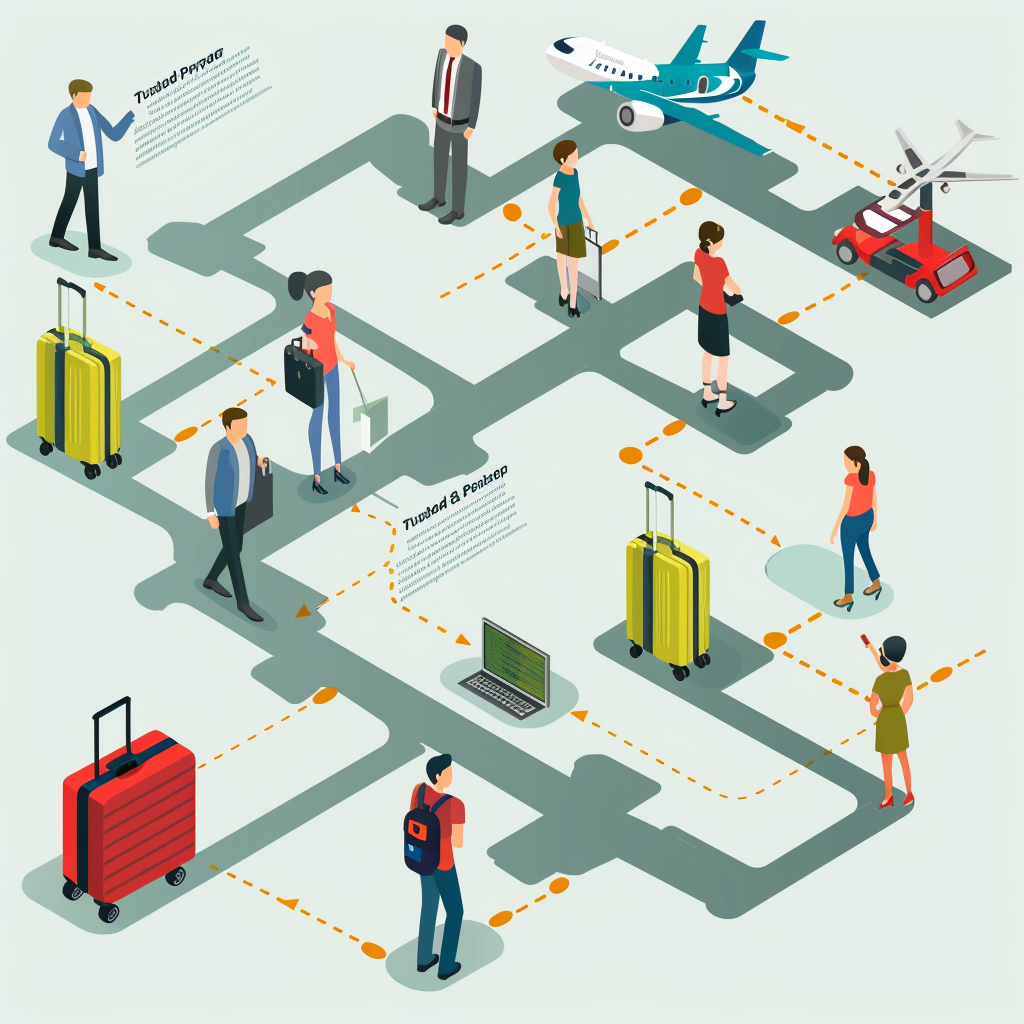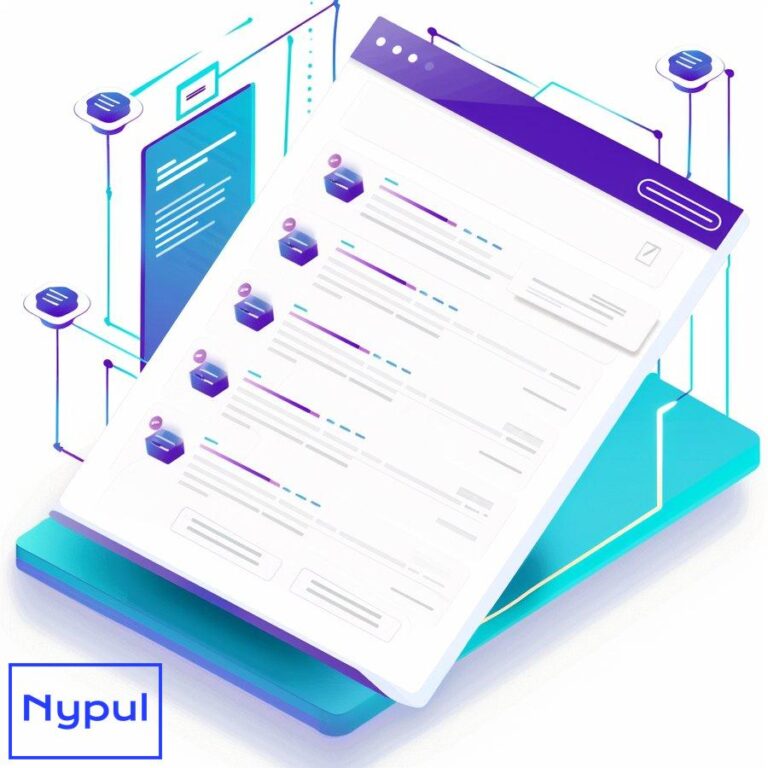What Are the Key Programs of the CBP
What is the U.S. Customs and Border Protection (CBP)?
The U.S. Customs and Border Protection (CBP) is a vital federal law enforcement agency operating under the Department of Homeland Security. Established in 2003, CBP plays a crucial role in safeguarding America’s borders and facilitating lawful international trade and travel.
CBP’s primary mission encompasses three core objectives:
Counterterrorism: CBP works tirelessly to prevent terrorists and terrorist weapons from entering the United States, employing advanced screening technologies and intelligence-driven strategies to identify potential threats.
Border Security: The agency is responsible for securing and managing 7,000 miles of land border and 95,000 miles of shoreline, ensuring the integrity of U.S. boundaries and preventing illegal entry.
Customs Operations: CBP oversees the enforcement of customs laws, collecting duties and taxes on imported goods while facilitating legitimate trade and travel.
With a workforce of over 60,000 employees, CBP is one of the largest law enforcement organizations in the world. These dedicated professionals include Border Patrol agents, CBP officers, agriculture specialists, and mission support staff, all working together to protect the nation’s borders and economic interests.
CBP operates at 328 ports of entry across the United States, including land borders, airports, and seaports. These locations serve as critical checkpoints for processing incoming travelers, cargo, and mail, ensuring compliance with U.S. laws and regulations.
The agency’s responsibilities extend beyond traditional border control. CBP also plays a significant role in:
Trade Facilitation: CBP works closely with the business community to streamline import and export processes, reduce barriers to trade, and promote economic growth.
Revenue Collection: As the second-largest revenue-collecting source in the federal government, CBP collected approximately $80 billion in duties, taxes, and fees in fiscal year 2020.
Drug Interdiction: CBP is at the forefront of combating drug trafficking, using advanced detection technologies and intelligence-driven operations to intercept narcotics at the border.
Agriculture Protection: CBP agriculture specialists work to prevent the introduction of harmful pests and diseases that could threaten U.S. agriculture and natural resources.
To effectively carry out its diverse responsibilities, CBP employs a wide range of cutting-edge technologies and innovative programs. These include non-intrusive inspection systems, automated targeting systems, and biometric identification tools, all designed to enhance border security while facilitating legitimate trade and travel.
CBP’s operations are guided by a commitment to professionalism, integrity, and respect for individual rights. The agency strives to balance the need for robust border security with the principles of fairness and due process, ensuring that its actions align with U.S. laws and values.
As global trade and travel continue to evolve, CBP remains at the forefront of adapting to new challenges and opportunities. The agency’s ongoing efforts to modernize its operations, enhance collaboration with international partners, and leverage emerging technologies demonstrate its commitment to maintaining a secure and prosperous United States in an increasingly interconnected world.
How do Trusted Traveler Programs enhance border crossing efficiency?
Trusted Traveler Programs (TTPs) are innovative initiatives implemented by the U.S. Customs and Border Protection (CBP) to expedite the border crossing process for pre-approved, low-risk travelers. These programs significantly enhance border crossing efficiency while maintaining robust security measures.
Global Entry
Global Entry is the flagship Trusted Traveler Program designed for frequent international travelers entering the United States. This program offers several key benefits:
- Expedited clearance through dedicated kiosks at participating airports
- No need to fill out paper customs declaration forms
- Reduced wait times, often less than 5 minutes
- Automatic eligibility for TSA PreCheck for domestic flights
To participate in Global Entry, applicants must undergo a rigorous background check and in-person interview. Once approved, members can use automated kiosks at designated airports, streamlining the entry process and reducing congestion at customs checkpoints.
NEXUS
NEXUS is a joint program between the United States and Canada, facilitating expedited border crossings for pre-approved travelers:
- Dedicated lanes at land border crossings
- Expedited processing at marine reporting locations
- Access to Global Entry kiosks when entering the U.S. by air
- TSA PreCheck eligibility
NEXUS members benefit from reduced wait times at both U.S. and Canadian borders, enhancing cross-border travel efficiency for business and leisure travelers alike.
SENTRI
The Secure Electronic Network for Travelers Rapid Inspection (SENTRI) program focuses on expediting entry into the United States from Mexico:
- Dedicated lanes at southern land border crossings
- Reduced wait times, often up to 75% shorter than regular lanes
- Access to Global Entry kiosks when entering the U.S. by air
- TSA PreCheck eligibility
SENTRI members enjoy significantly faster border crossings, facilitating commerce and cultural exchange between the U.S. and Mexico.
FAST
The Free and Secure Trade (FAST) program is tailored for commercial truck drivers operating between the U.S., Canada, and Mexico:
- Expedited processing at land border crossings
- Dedicated FAST lanes at select northern and southern border ports
- Reduced customs examinations
By streamlining the entry process for low-risk commercial shipments, FAST enhances supply chain security and promotes efficient cross-border trade.
Efficiency Enhancements
Trusted Traveler Programs contribute to border crossing efficiency in several ways:
Reduced Processing Times: Pre-approved travelers require minimal interaction with CBP officers, allowing for quicker clearance and reduced wait times.
Resource Allocation: By expediting low-risk travelers, CBP can focus more resources on identifying and screening higher-risk individuals and cargo.
Predictability: TTPs provide members with more consistent and predictable border crossing experiences, facilitating better travel planning.
Technology Integration: These programs leverage advanced technologies, such as biometric verification and automated kiosks, to enhance both security and efficiency.
Risk Management: By thoroughly vetting program applicants, CBP can better assess and manage risk, allowing for more targeted security measures.
The following table illustrates the key features and benefits of each Trusted Traveler Program:
| Program | Primary Focus | Key Benefits | Eligibility |
|---|---|---|---|
| Global Entry | International air travelers | Expedited clearance at airports, TSA PreCheck | U.S. citizens, permanent residents, select foreign nationals |
| NEXUS | U.S.-Canada border crossings | Dedicated lanes at land borders, expedited air entry | U.S. and Canadian citizens, permanent residents |
| SENTRI | U.S.-Mexico border crossings | Dedicated lanes at southern border, expedited air entry | U.S. citizens, permanent residents, select foreign nationals |
| FAST | Commercial truck drivers | Expedited processing for commercial shipments | U.S., Canadian, and Mexican citizens |
Trusted Traveler Programs have demonstrated significant success in enhancing border crossing efficiency. For example, a study conducted by CBP showed that Global Entry members experience average wait times of less than 5 minutes, compared to 23 minutes for non-members during peak travel periods.
These programs not only benefit individual travelers but also contribute to broader economic advantages. By facilitating faster and more predictable cross-border movements, TTPs support international trade, tourism, and business travel, fostering economic growth and strengthening international relationships.
As CBP continues to refine and expand its Trusted Traveler Programs, the agency remains committed to balancing security requirements with the need for efficient border management. Through ongoing technological advancements and process improvements, these programs will play an increasingly important role in shaping the future of international travel and trade.
What trade facilitation and enforcement programs does CBP implement?
U.S. Customs and Border Protection (CBP) implements a comprehensive suite of trade facilitation and enforcement programs designed to promote legitimate trade while protecting the U.S. economy from unfair practices and illicit goods. These programs strike a delicate balance between expediting commerce and ensuring compliance with trade laws and regulations.
Automated Commercial Environment (ACE)
ACE serves as the primary system for processing trade-related imports and exports:
- Single window for electronic submission of trade data
- Streamlined cargo release and entry summary processes
- Enhanced visibility and reporting capabilities for trade community
By centralizing trade data and automating many processes, ACE significantly reduces paperwork and expedites customs clearance, benefiting both CBP and the trade community.
Customs-Trade Partnership Against Terrorism (CTPAT)
CTPAT is a voluntary public-private sector partnership program focusing on securing the international supply chain:
- Expedited processing for CTPAT members
- Reduced number of CBP examinations
- Priority treatment during trade disruptions or following a terrorist attack
This program enhances supply chain security while providing tangible benefits to participating companies, fostering a collaborative approach to trade security.
Importer Self-Assessment (ISA) Program
ISA is a voluntary approach to trade compliance:
- Reduced CBP oversight for low-risk importers
- Expedited cargo clearance
- Enhanced business controls and compliance practices
By encouraging importers to take greater responsibility for their compliance, ISA allows CBP to focus resources on higher-risk trade activities.
Centers of Excellence and Expertise (CEEs)
CEEs are industry-specific hubs that centralize CBP’s trade expertise:
- Focused on specific industries (e.g., electronics, pharmaceuticals)
- Provide uniformity in trade practices and decisions
- Facilitate communication between CBP and industry stakeholders
These centers enhance CBP’s ability to address industry-specific issues and promote consistent trade enforcement across ports of entry.
Enforce and Protect Act (EAPA)
EAPA provides a framework for investigating allegations of evasion of antidumping and countervailing duties:
- Streamlined investigation process
- Increased authority to collect and share information
- Enhanced penalties for duty evasion
This program helps protect U.S. industries from unfair trade practices and ensures a level playing field for domestic producers.
Automated Export System (AES)
AES is the electronic system for filing export declarations:
- Streamlined export reporting process
- Enhanced compliance with export regulations
- Improved data collection for trade statistics
By automating the export declaration process, AES facilitates legitimate exports while helping CBP identify potential violations of export controls.
Trade Enforcement
CBP’s trade enforcement efforts focus on several key areas:
Intellectual Property Rights (IPR) Enforcement: CBP works to prevent the importation of counterfeit and pirated goods, protecting U.S. businesses and consumers.
Forced Labor Prevention: The agency enforces laws prohibiting the importation of goods produced with forced labor, promoting ethical supply chains.
Antidumping and Countervailing Duties (AD/CVD): CBP collects these duties to offset unfair trade practices and protect U.S. industries from injurious imports.
Trade Agreement Enforcement: The agency ensures compliance with free trade agreements and preferential trade programs.
The following table illustrates the key features and benefits of CBP’s major trade facilitation and enforcement programs:
| Program | Primary Focus | Key Benefits | Participants |
|---|---|---|---|
| ACE | Trade data processing | Streamlined data submission, faster clearance | All importers and exporters |
| CTPAT | Supply chain security | Expedited processing, reduced examinations | Voluntary, all supply chain entities |
| ISA | Trade compliance | Reduced oversight, faster clearance | Voluntary, importers |
| CEEs | Industry-specific expertise | Uniform trade decisions, improved communication | Industry-specific |
| EAPA | Duty evasion prevention | Streamlined investigations, enhanced penalties | Enforcement-focused |
| AES | Export declarations | Automated reporting, improved compliance | All exporters |
CBP’s trade facilitation and enforcement programs have yielded significant results. For instance, in fiscal year 2020, CBP seized over 26,500 shipments containing counterfeit goods with an estimated value of nearly $1.3 billion, demonstrating the effectiveness of its IPR enforcement efforts.
These programs not only protect U.S. economic interests but also promote fair competition and consumer safety. By facilitating legitimate trade while targeting illicit activities, CBP plays a crucial role in maintaining the integrity of the global supply chain and supporting U.S. economic growth.
As international trade continues to evolve, CBP remains committed to refining and expanding its trade facilitation and enforcement programs. Through ongoing collaboration with the trade community, technological advancements, and data-driven risk management, CBP strives to create an ever more efficient and secure trade environment.
How does CBP secure U.S. borders through various initiatives?
U.S. Customs and Border Protection (CBP) employs a multi-layered approach to secure the nation’s borders, implementing various initiatives that leverage technology, intelligence, and human resources. These initiatives aim to prevent illegal entries, intercept contraband, and facilitate legitimate travel and trade.
Border Patrol Strategic Plan
The Border Patrol Strategic Plan serves as the foundation for CBP’s border security efforts:
- Risk-based deployment of resources
- Intelligence-driven operations
- Enhanced situational awareness
- Rapid response capabilities
This comprehensive strategy allows CBP to adapt to evolving threats and maximize the effectiveness of its border security measures.
Integrated Fixed Towers (IFT)
IFT systems provide persistent surveillance along the U.S.-Mexico border:
- Day and night cameras
- Ground surveillance radar
- Advanced sensor technology
- Centralized command and control
These towers significantly enhance CBP’s ability to detect and respond to illegal border crossings and smuggling activities.
Mobile Surveillance Capability (MSC)
MSC units offer flexible, vehicle-mounted surveillance systems:
- Telescoping mast with cameras and radar
- Rapid deployment capabilities
- Real-time video and data transmission
These mobile units allow Border Patrol agents to monitor remote or rapidly changing border areas effectively.
Unmanned Aircraft Systems (UAS)
CBP utilizes UAS for aerial surveillance and reconnaissance:
- Extended flight duration
- Advanced sensor payloads
- Real-time data transmission
- Reduced risk to personnel
UAS provide critical intelligence and situational awareness, particularly in challenging terrain or dangerous environments.
Biometric Exit Program
This initiative enhances border security by verifying the identity of departing travelers:
- Facial recognition technology
- Automated matching against visa and passport databases
- Identification of visa overstays and persons of interest
By closing the loop on entry and exit data, CBP can better track and manage international travelers.
Operation Stonegarden
This grant program enhances cooperation between federal, state, and local law enforcement agencies:
- Funding for additional patrols and operations
- Enhanced information sharing
- Coordinated border security efforts
Operation Stonegarden fosters a collaborative approach to border security, leveraging local expertise and resources.
National Targeting Center (NTC)
The NTC serves as CBP’s central hub for risk assessment and targeting:
- Advanced data analytics
- Intelligence fusion
- 24/7 operational support
- Interagency collaboration
By identifying high-risk travelers and cargo before they reach U.S. borders, the NTC plays a crucial role in proactive border security.
Border Security Initiatives
CBP’s border security efforts focus on several key areas:
Physical Barriers: Construction and maintenance of fencing, walls, and other physical obstacles to deter illegal crossings.
Technology Deployment: Implementation of sensors, cameras, and other surveillance systems to monitor border areas.
Maritime Patrols: Use of vessels and aircraft to secure coastal and inland waterways.
Checkpoint Operations: Strategic placement of interior checkpoints to interdict illegal activities beyond the immediate border area.
The following table illustrates the key features and benefits of CBP’s major border security initiatives:
| Initiative | Primary Focus | Key Technologies | Coverage Area |
|---|---|---|---|
| IFT | Fixed surveillance | Cameras, radar | U.S.-Mexico border |
| MSC | Mobile surveillance | Vehicle-mounted sensors | Flexible deployment |
| UAS | Aerial reconnaissance | Drones, advanced sensors | Air and land borders |
| Biometric Exit | Traveler verification | Facial recognition | Airports, seaports |
| Operation Stonegarden | Law enforcement cooperation | Varied | Border communities |
| NTC | Risk assessment | Data analytics, intelligence | Nationwide |
CBP’s border security initiatives have yielded significant results. For example, in fiscal year 2020, Border Patrol agents apprehended over 400,000 individuals attempting to enter the U.S. illegally, demonstrating the effectiveness of these multi-layered security measures.
These initiatives not only enhance national security but also contribute to public safety and economic stability.




